How do we get more people to bike for transportation? Proactive leadership.
The 2020 bike boom could have a more lasting impact on cities around the world than the 1970s bike boom had on America. But only if planners and politicians—and people—clamor for this change.
As the COVID-19 crisis intensified in the United States, many residents in Colorado began teleworking, and stay-at-home orders further kept people at home. Coloradans are avoiding most travel to their workplaces, restaurants, friends’ houses and other everyday destinations. Consequently, automobile traffic has reduced considerably around the state. More folks are taking to their own neighborhoods by bike or foot for fresh air and recreation.
With fewer people traveling on our roads via car, it’s easier than ever to see how space has been prioritized for driving at the expense of other transportation modes and how single-occupancy vehicle travel has affected society. While the circumstances that got us here are tragic, the current quieter roads provide us with a vision for how streets can change to become people-friendly. Streets that offer more choices for how to get around benefit every type of bike rider in Colorado—whether you are a mountain biker riding to a trailhead, a father biking to a park with his kids, a recreational road rider on a weekend jaunt or someone who already commutes regularly by bike—and make our communities more resilient in the process.
What are we learning? With these changes, we’re better able to see how Colorado communities benefit when people ride bikes more and drive a little less. Fewer single-occupancy motor vehicle trips means more road space is available and fewer pollutants are emitted into the air. It also means that people get exercise, have a more efficient method of running daily errands, get more fresh air and can more safely ride with family. When elected leaders prioritize strong biking and walking policy and funding, they can create communities that are safe places for families to ride. And that’s the ultimate test of whether a place is serving all of its biking, walking and rolling residents. We can all play our part in making healthier choices for our communities and ourselves—from one individual to elected and business leaders—so that imagining a Colorado where driving isn’t the first choice to get around becomes easier and easier.
Biking, walking and rolling need priority attention now so that people have attractive alternatives to driving. In Colorado, we’re fortunate to have so much potential for better bike, pedestrian and transit infrastructure in communities of all kinds around the state. Many people do have to drive long distances or have a disability that makes other modes of transportation a no-go. Transit options can be limited or non-existent, especially in rural areas. So, how do we allow for folks who need to drive to do so, while ensuring that our public spaces are distributed equitably for all people who bike, walk or roll, too?
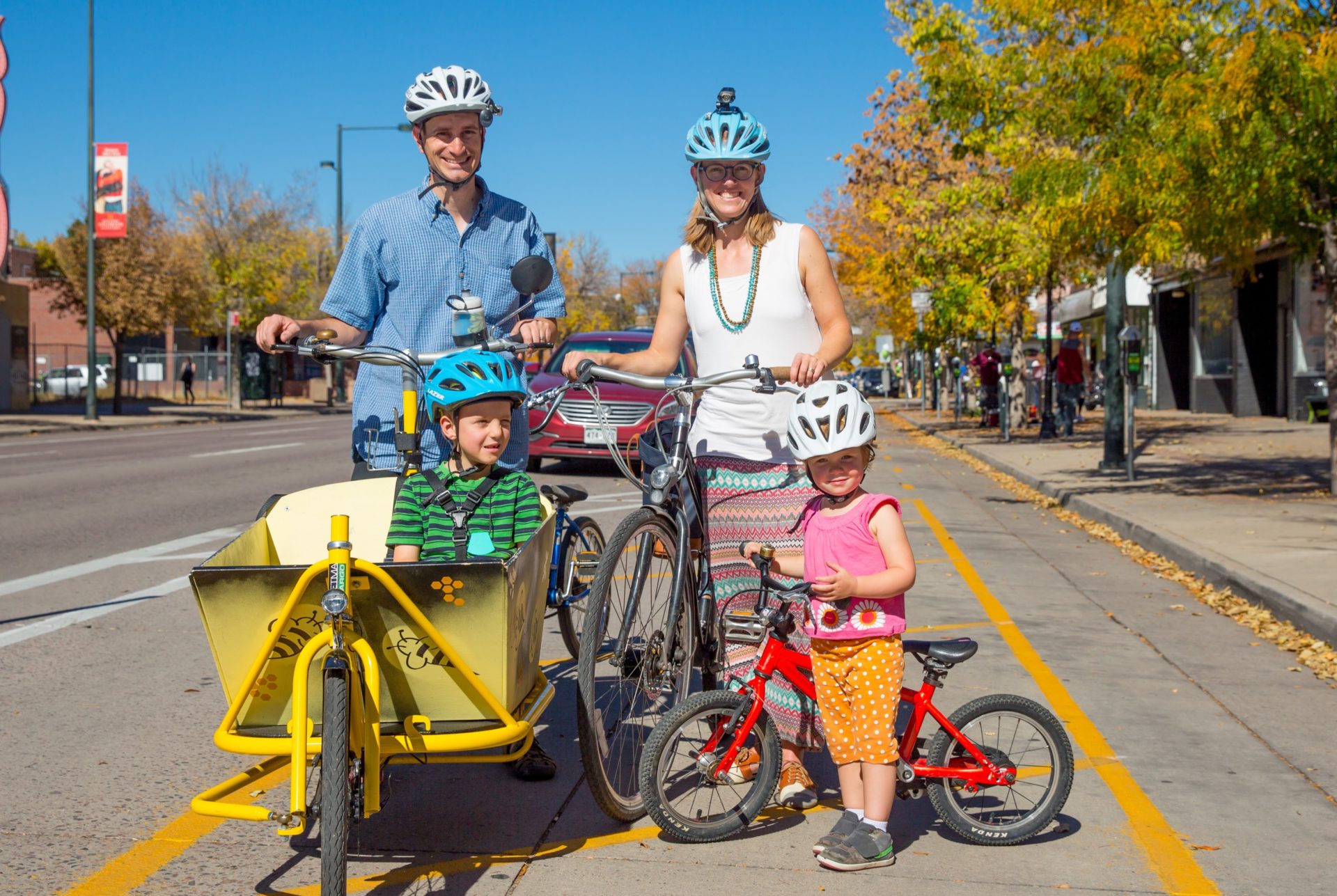
What cities and towns can do
Providing access to sustainable and efficient transportation options benefits all people regardless of need. This means making sure that all residents have access to transportation choices that work for them, whether they bike, walk, roll or have to drive. We think now is the time for cities to reset their transportation policies to achieve a better balance. This work is part of ensuring that we are supporting everyone’s needs through this crisis and beyond. Basing access to work, food and other necessities on driving leaves out large portions of our population who can’t or simply choose not to drive for the reasons we’ve talked about above and in other articles. Prioritizing driving also means that vulnerable families and children continue to have unsafe neighborhoods in which to play and travel. Some obvious opportunities exist to layer policy and investments that create an inviting environment for people who already bike, want to bike more or just want to be able to get around safely.
Policy examples that create safer road environments include lowering speed limits and prioritizing people on foot and on bikes at intersections with uniform No Turn on Red regulations. These supports continue the flow of vehicle traffic while acknowledging that the driving public needs to allow more vulnerable road users—those outside a two-ton vehicle—the time and space they need to move safely in public space.
Ultimately, the balance must be shifted. Take a look at the graphic to the right, which illustrates the amount of space that’s dedicated toward motor traffic in cities and the amount left over for people who aren’t in cars. It’s paltry. Now that streets are much quieter, it’s obvious to a lot of folks that people on bikes and on foot are relegated to the literal sidelines. This is true every day, but especially in this time of COVID-19, people are being pushed dangerously close together. Cities around the country—including Denver—have seen the potential for opening up streets in neighborhoods and parks so that bicyclists and pedestrians can spread out on their daily bike rides and walks or when they are running errands.
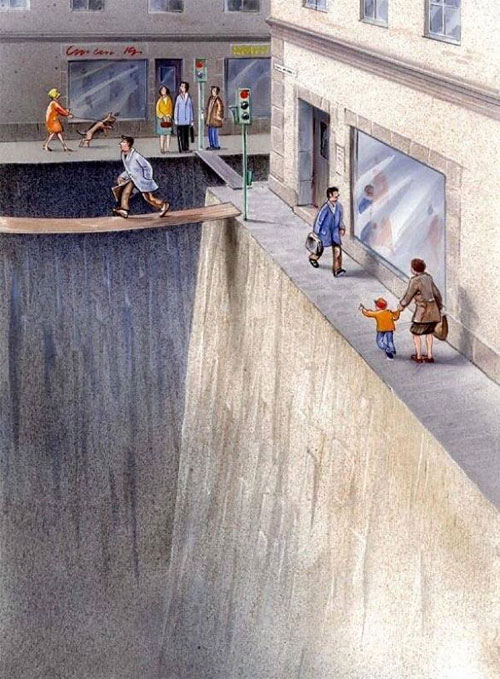
Denver has made a great start, and has been lauded for taking the steps it has, but we think more can still be done, including opening up more streets and continuing to do so once life returns to some semblance of normalcy. And we think that applies to other Colorado communities as well, which haven’t followed Denver’s lead at the time of this publication. When space usually allocated exclusively to motor traffic is opened to bicycle and foot traffic, more people have the space to be outside safely. This will continue to be true once the COVID-19 crisis has subsided.
These opened spaces must function in conjunction with safer traffic on other streets in order for bicyclists and pedestrians to have broad access. Drivers naturally are more cautious and slow on streets lined with trees, bicycle lanes and wider sidewalks, curb bump-outs and narrower lanes. More roads can be designed or retrofitted with these traffic-calming measures along with lowered speed limits. These measures will help people in cars drive at the appropriate speed for what’s happening on the street and sidewalks, and encourage drivers to look for people crossing so they have time to stop. People who are driving will risk a smaller chance of crashing, and might find that other modes of transportation are just as—and likely more—joyful. Moving more slowly through a space also can help travelers notice local restaurants, shops and other businesses they might visit.
While signage indicating lower speed limits and police enforcement will not create the sustained or equitable change that is necessary, it can indicate that a community is prioritizing safe streets. Overall, though, we need infrastructure.
What individuals can do
Simultaneously, people can choose to ride their bike or walk more. Even small changes to one’s routine can make a big difference. Like we mentioned earlier, some trips are more challenging than others to take without a car, due to distance, a disability or some other factor. However, people are generally not actually driving that far. About 46% of all trips taken in a private vehicle (car, SUV, motorcycle, other motor vehicles) are three miles or shorter in length (source: National Household Travel Survey 2017). A trip of this length takes around 15-30 minutes by bicycle.
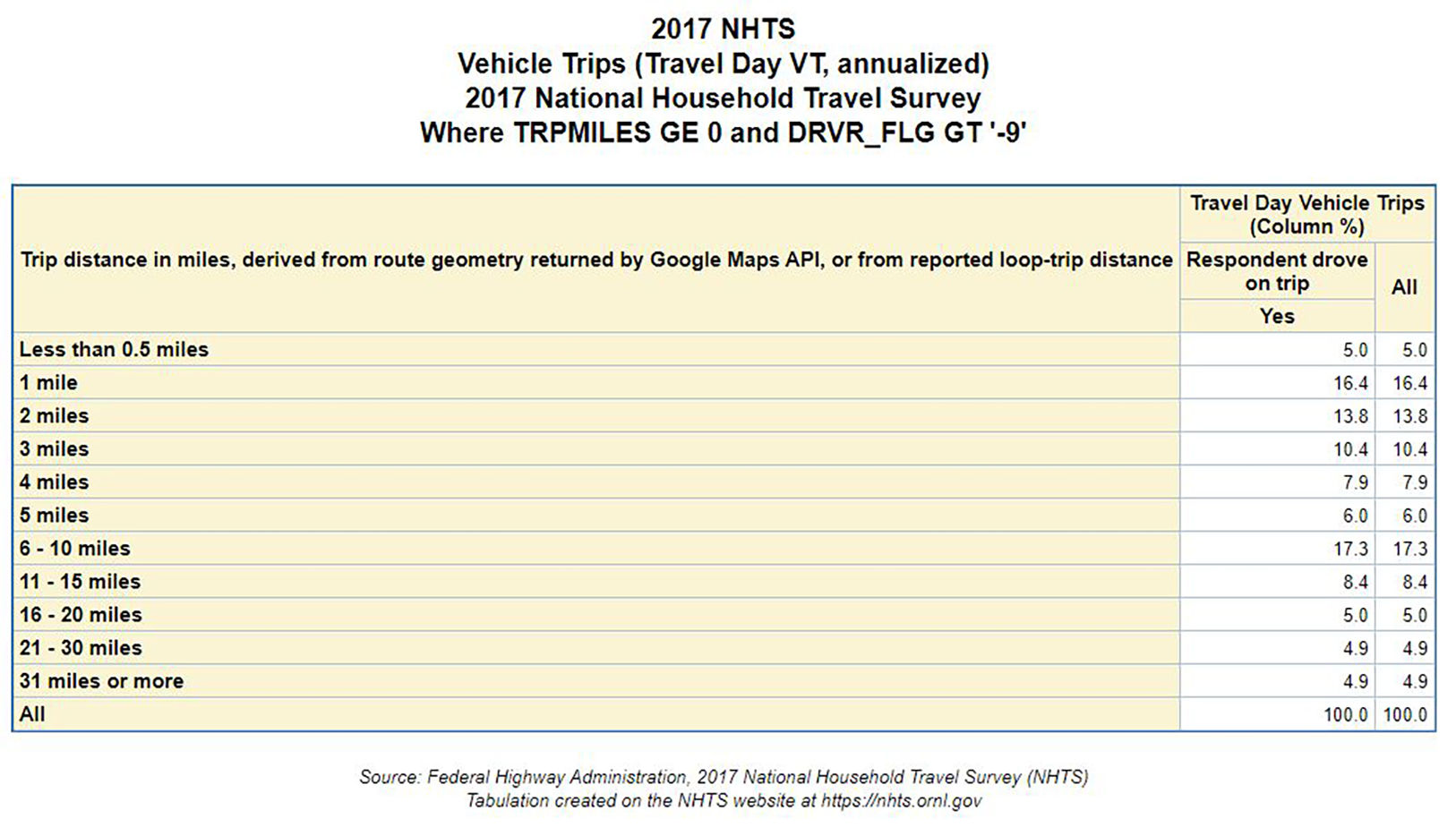
Sum of percentage of trips taken that were 3, 2, 1 mile(s) or less than 0.5 miles is 45.6%.
There is clearly a high potential for more trips being shifted to bicycling, walking and transit. Individuals can choose to travel by bike or foot instead of driving to a nearby destination, which can take a bit of initial getting-used-to but is healthy, environmentally friendly, and safer for other road users. In our article on using a bike for transportation, we get into how you can start using your bike to get to a lot of different everyday places. This mode shift will keep more cars off the road and allow space for those who must drive to do so on traffic-calmed roads with less collective negative impact on air quality and crash rates.
When you drive anywhere in your gas-powered car, whether you’re going to a restaurant two miles away or your office 20 miles away, your vehicle is producing pollutants. Bicycling can be an excellent transportation option that doesn’t produce pollutants and is highly efficient. The fossil fuels that motor vehicles must use to function aren’t renewable, but the food we eat that powers our bicycling is! If you’re driving, combine your car trips for multiple errands, so you’re not making several individual trips. The Regional Air Quality Council in the Front Range has some more tips here. Drivers should follow posted speed limit signs and avoid distractions so they can pay attention to what’s around them.
Mobility advocates and environmental advocates—including us at Bicycle Colorado—must keep pushing local government, city planners and traffic engineers to support and encourage non-motorized transportation options and to ensure safe travel at reasonable speeds on our roads. We also need to engage with the communities most affected by poor air quality and injuries due to crashes to understand their needs and work with them to find impactful local solutions.
What elected officials can do
Communities are stronger when there is a diversity of transportation options. It’s never been more important for government officials to listen to their constituents who need safer routes and access.
Bicyclists, pedestrians and transit users deserve safe travel spaces and timely, convenient transit options. The solution to congestion and higher rates of injury and death is not to build wider roads and add more lanes, which leads to induced demand, it is to encourage people to take other modes of transportation and to create infrastructure that will naturally slow down traffic. Pay attention to research and the needs of the many, not the allure of speed and convenience.
In a state that is prized for its fresh air and sunlight, elected leaders need to be bold in instituting measures that will preserve and maintain these qualities and make Colorado an even healthier and safer place for all people, not just for folks who are driving. Leaders of larger and denser communities across the state: take inspiration from cities like Milan and Paris, which are taking permanent steps now to make their cities stronger by making them more bike- and pedestrian-friendly.
There is no reason we can’t do that here.
What businesses can do
We also want to put out a call to businesses and business leaders. Make your storefronts more accessible and friendly to bicyclists and pedestrians. Have bike racks available, and make sure your business signage is visible near your street-facing door and not just above the awning where only people driving by can see it. Make space for and encourage your own employees to commute by bike or by foot.
Bicycling provides a boost to muscles, cardiovascular health and mood, as we’ve covered in our articles on bicycling and physical and mental health. Employees who commute by active transportation like bicycling can save your business money in health insurance costs and worker’s compensation claims. With less stress from being stuck in congestion, your bicycling employees might feel happier coming in to work and might also make it in faster since they won’t be sitting in gridlock.
With more employees biking, you’ll have smaller maintenance costs on your car parking lot and may be able to get away with having fewer of those spots in the first place, since bicycles take up much less space. Provide incentives for employees to arrive on their bikes, on scooters or by foot, make sure bike racks are easily available, and make sure your employees have space to change and store clothing. There are a ton of fantastic resources out there on why you should be a bike-friendly business and how you can support and encourage your employees who ride.
What does this all mean?
Changes so extensive need motivated leaders at all levels, but they should be considered no-brainers. More Coloradans using active transportation like bicycling takes cars off of the road (reducing crash rates, congestion and poor air quality), frees up street and parking lot space, and provides people with a way to get exercise and transportation safely distanced from one another.
Bicycling is hands-down the healthiest, most efficient and most environmentally-friendly mode of transportation for short trips, be it for commuting, errands or recreation. In the face of congestion, high injury and death rates from car crashes, poor air quality, sedentary lifestyles and the fear and anxiety in these times of COVID-19, bicycling is the best solution.
Appendix and resources
The way our roads are being used right now is an indicator of what we can change to find this balance between allowing drivers who must drive to do so and prioritizing bicyclists and pedestrians as vulnerable road users and necessary to the fabric of a community.
People are still driving on our roads, but fewer are doing so to commute. People are driving to get to everyday places like the grocery store or parks, and some are driving just for fun. During this crisis, the roads that they’re traveling on are suddenly quite empty, with fewer cars and other road users to navigate around. This means that drivers are moving faster and getting into more crashes.
This is happening because roads take up much of the public space, and many have wide lanes, spread-out signals, few pedestrian crossings and little-to-no built-in traffic calming measures. Additionally, speed limits are often set high enough for motorists to drive comfortably and without stopping at many red lights, but such speeds can be dangerous for pedestrians. A speed increase of just five or 10 miles drastically increases a vulnerable road user’s likelihood of death in a crash.
When there’s more congestion, drivers are forced to travel more slowly. Many folks spend chunks of their workdays stuck in heavy traffic on highways and major local roads. Congestion is not, however, a good solution to slowing down cars so that other road users can take up space, too. It leads to frustration among drivers, roads that are sometimes harder to navigate for bicyclists and pedestrians, and poorer air quality with cars spending more time running or idling on the road.
Actually installing traffic calming-infrastructure is the solution, as well as encouraging and teaching people about the benefits of using active transportation or transit. Speed limits can be set lower without significantly impacting travel time in many cases. In fact, according to the World Resources Institute, “research from Grenoble, France has shown that a speed limit of 30 kmph (18.64 mph) rather than 50 kmph (31 mph) only added 18 seconds of travel time between intersections 1 km (.62 miles) apart.” Data from Denver also shows that removing a traffic lane and replacing it with a bike lane and a bus lane along Broadway only added 9 seconds to travel times over a 2.5-mile stretch.
Adding a bicycle lane is cheaper than adding a highway lane by far, especially if one takes into account the savings in road maintenance and health effects of better air quality. Adding new highway lanes can cost between $2 and $10 million per lane-mile, while building a new large surface street can cost about $750,000 per lane-mile. On the other hand, the cost of adding a bike lane is $5,000-50,000 per lane mile. In fact, a study by Portland State University’s Transportation Research and Education Center in Oregon found that bicycle lanes and infrastructure can even positively impact the local economy in that area as measured through sales and employment.
Prioritizing active transportation over motor traffic can also be a major part of the solution to Colorado’s air quality problems, especially in the Front Range. The notorious ozone problem in Colorado is exacerbated by volatile organic compounds and nitrogen oxide released by automobiles and other sources. The ground-level ozone that is formed by the interaction of these materials with sunlight can cause breathing difficulties, trigger attacks of respiratory conditions like asthma or COPD and generally degrades the fresh air that people think of when they think of “Colorado.” Now that there are fewer folks driving in Colorado, air quality has noticeably improved.
Colorado’s air quality could remain as good as it is lately but only with some work on all our parts to continue driving less. In the Denver metro area for example, city leaders want to see more people continuing to telework because keeping these cars off the roads could help boost air quality along the Front Range. For those of us who can’t telework, it is imperative that many of us shift to using active transportation and transit to get to workplaces and other everyday destinations.
In Denver, the Denver Streets Partnership is pushing for the Shared and Open Streets to be continued throughout the summer. They see that the need for social distancing won’t be over for a while, and people deserve to be treated with dignity and given priority over single-occupancy motor traffic. Communities across Colorado are encouraged to see how public space and attention can be reallocated more equitably toward vulnerable road users. Bicycle Colorado and the Denver Streets Partnership are excited to work with advocates and leaders around the state.
Your membership makes resources like this possible.
Leave A COMMENT
Our twitter feed is unavailable right now.





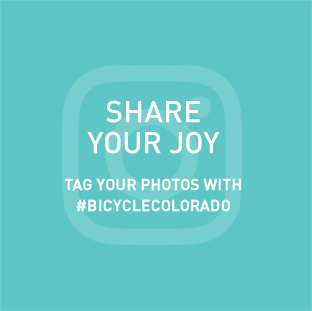

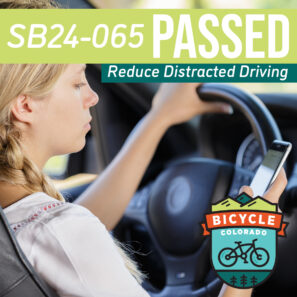
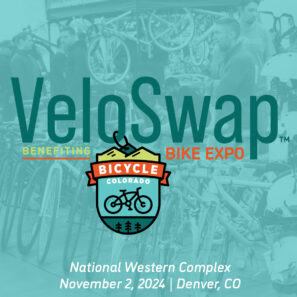
COMMENTS (2)
Thomas E Baxter -
Being recently retired, I have been able to enjoy bicycling much more often than previously. Although my friends here in Montana, where I have been for awhile now on a long vacation, cannot understand it, the beauty of cycling on the many low-traffic streets around Denver is just as beautiful as the miles and miles of gravel roads here in the Beartooth mountains. I just hope this article reminds us how a steady effort by we cyclists can convince more in the community to sacrifice just a little so our entire urban community can be enjoyed safely by cyclists. Its sweet to have some of the Capitol Hill streets dedicated to bikes and pedestrians…hopefully more miles can be so used more often.
Dawn -
Hi! I’m a Platt Park resident who rides my bike to complete errands as often as possible. I appreciate the Shared & Open Streets. They make me feel safer and I love seeing families take advantage of them. Please, let’s never go back to thoughtlessly (and automatically) giving vehicles priority access to our streets . Let’s make them accessible to all of us so we can safely spread out and breathe fresh air!